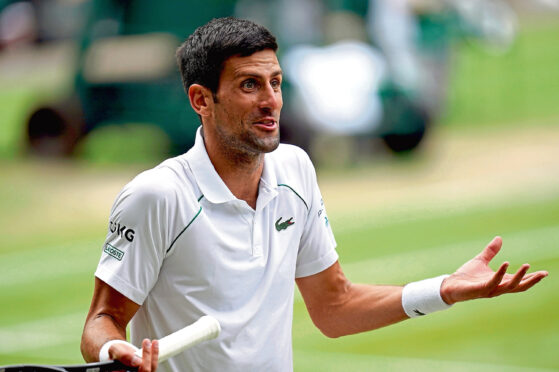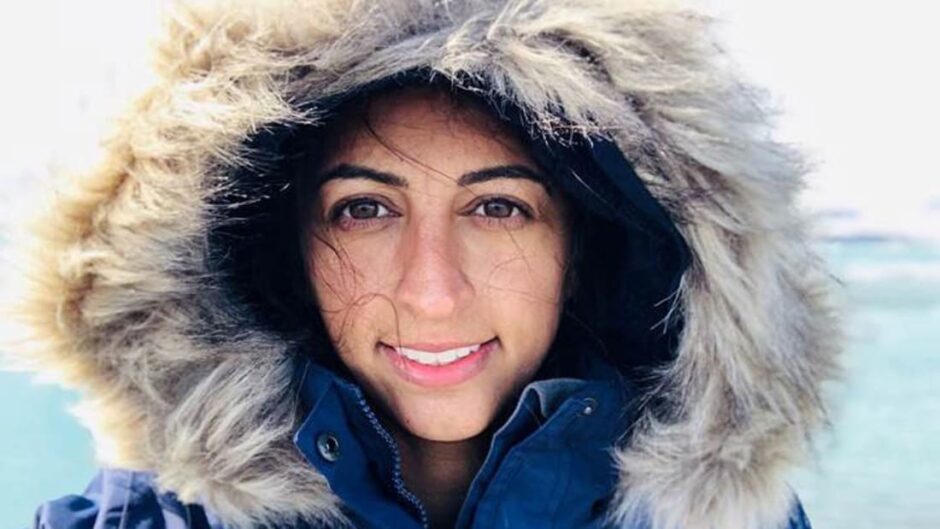
It has been a stormy week in the world of tennis. Seven days dominated by discussion of Novak Djokovic, his vaccination record, medical history, and whether he should or should not have been allowed into Australia.
He’s still there, in a quarantine hotel, and yesterday his lawyers insisted he should be allowed to stay to take part in the Australian Open, starting on January 17. All players had to provide proof of their Covid vaccination status or receive a medical exemption from Tennis Australia before arriving in the country.
Of course, Djokovic, who has spoken out about his opposition to vaccinations in the past, got an exemption but how, and, more importantly, why has caused a storm of speculation and criticism all week.
Yesterday, his legal team said he had Covid in December, meaning he did not need to be vaccinated. Then, within hours, a photograph emerged of him at an awards ceremony for young players allegedly taken the day after he tested positive.
From the other side of the world, it seems a bit of a mess with potential to get messier and we’ll find out what the Australian authorities have to say at his appeal against deportation tomorrow.
It seems an age since the nine-time Australian champion posted a smiling picture from the airport tarmac, confirming he would indeed be “heading Down Under with an exemption permission” to play. Between boarding his plane in Dubai and landing in Melbourne, where the tournament takes place, the backlash over the decision from fans, the Australian public and officials alike led to a quick about-turn, and the world No 1’s visa was revoked as he tried to enter.
Like every other tennis fan around the world, I am fascinated to see what happens because it will have far-reaching implications not just for the Australian Open but the rest of the tennis tour. Whatever the truth about this case, the authorities must stamp on any suggestion that there is one rule for the public and another for the rich and famous.
Spectators at the event must show proof of vaccinations before getting in, so I can understand why the Australian public saw double standards. Since the start of the pandemic, Melburnians have endured six lockdowns and more than 260 days under restrictions, with many people separated from friends and family for almost two years now. I doubt the man on the street cares that Djokovic will draw crowds and sponsorship money – to them, he is just someone who seemed to be bending if not breaking the rules, while the rest are trying to keep each other safe.
The Australian Government has confirmed other players received exemptions from the vaccine requirements due to contracting Covid within the past six months. His lawyers suggest that is the case for Djokovic too, confirming a positive PCR test was taken on December 16, just two weeks after his last match of the 2021 season at the Davis Cup in Madrid.
He is one of the fittest and most successful players in one of the most demanding sports, so you can understand why questions are being asked if his exemption was appropriate even if, strictly speaking, it is justified. There has been a lot of comment from various influential names in tennis, but Rafael Nadal summed it up for me when, asked about Djokovic, he said: “I think if he wanted, he would be playing here in Australia without a problem. He made his own decisions, and everybody is free to take their own decisions, but then there are some consequences. Of course I don’t like the situation that is happening. In some way I feel sorry for him. But at the same time, he knew the conditions since a lot of months ago, so he makes his own decision.”
Now there are claims it is about politics between the Australian Government and Victoria state authorities, and a looming election. Meanwhile, the 20-time grand slam champion’s fans are demonstrating outside his hotel.
My overwhelming feeling is one of sadness that so much attention and focus has been taken away from what’s known as the Happy Slam and its players, when we should be celebrating the return to live tennis.
Solo polar adventurer is an absolute inspiration
Did you see Preet Chandi has become the first woman of colour to complete a solo crossing of Antarctica?
In an absolutely incredible display of endurance, the 32-year-old Brit skied 700 miles across snow and ice over 40 days, seven hours and three minutes, facing temperatures of -50C.
After reaching her goal, she said: “This expedition was always about so much more than me. I want to encourage people to push their boundaries and to believe in themselves, and I want you to be able to do it without being labelled a rebel. No matter where you are from or where your start line is, everybody starts somewhere.”
Inspirational.

Enjoy the convenience of having The Sunday Post delivered as a digital ePaper straight to your smartphone, tablet or computer.
Subscribe for only £5.49 a month and enjoy all the benefits of the printed paper as a digital replica.
Subscribe